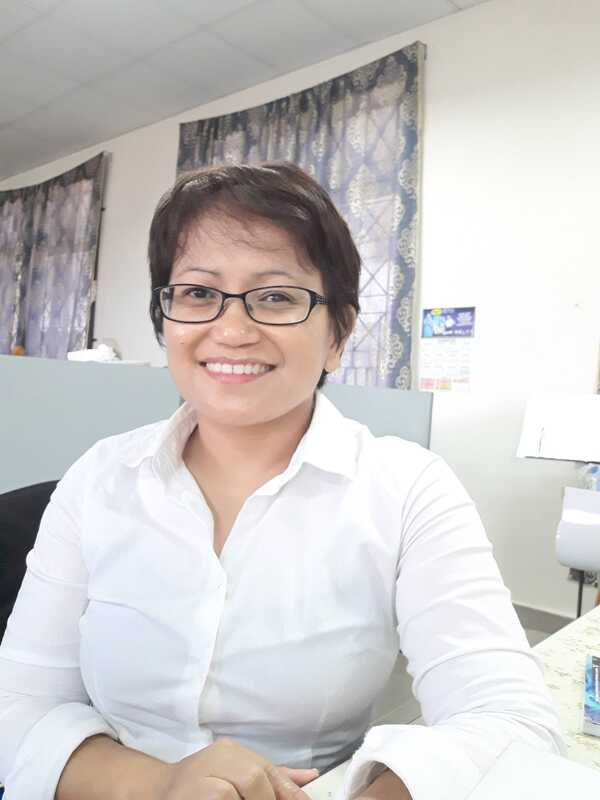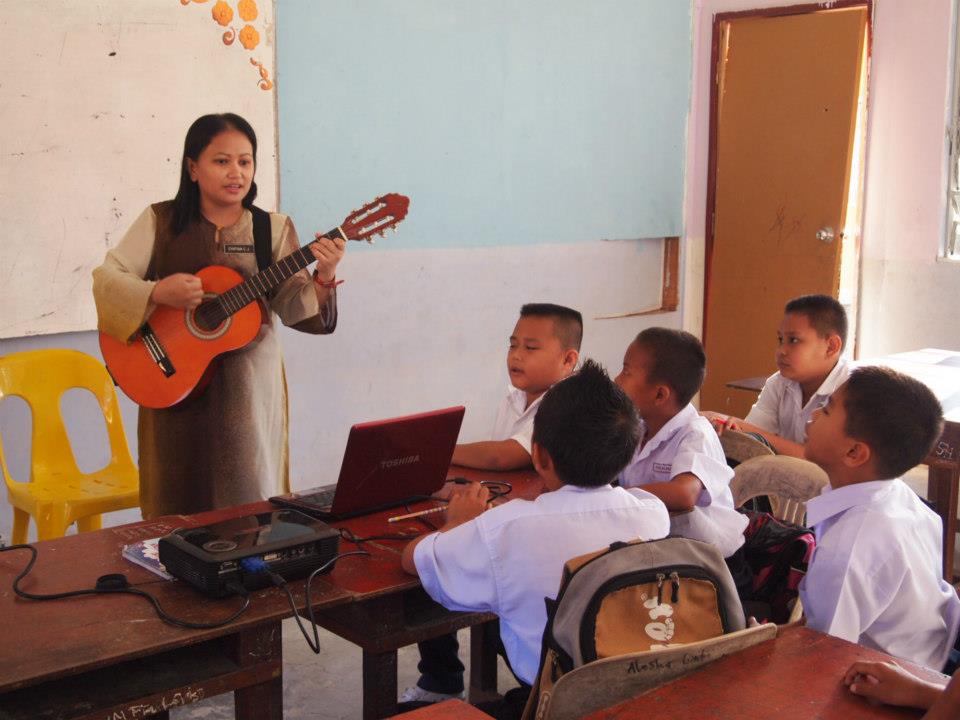|
by Cynthia C. James
Summary
I have plenty of experiences with low-resource classrooms - as a student, a teacher, and someone who works with and alongside teachers. In this post, I would like to share how all these experiences have shaped my thinking about technology integration practices in the classroom, and my belief about what matters. To borrow Clandinin's (2013) term, this is my 'narrative beginning.' I am sharing my reflections on how it all started, and how I came to be part of the Going Digital community.
Developing a 'relationship' with technology
As a college student many years ago, one of my biggest challenges was to find a way to type out my essays and project papers. Computers cost a fortune. I knew there was a computer lab at the college, and I could always go to a cyber cafe like most students. But being a kampung girl, I had very little experience with computers and I found technology intimidating. I got a job as a part-time sales assistant at a shopping mall and was able to collect enough money to buy a little typewriter. The machine was unfailing and sturdy and I loved it dearly - but there was one limitation. I could not use the typewriter to draw charts and graphs. I solved this problem by getting them drawn and printed at a shop. Paying people to draw my graphs and charts was expensive, and I was reluctant to spend too much of my fast-depleting student allowances and sales assistant’s pay-check on it. I had no choice but to learn how to use a computer. I took classes, spent a lot of time at cyber cafes, and mingled with tech-savvy people. Eventually, after clocking in countless hours of overtime at work, I was able to let my faithful typewriter go in exchange for a second-hand PC. I learned how to use basic MS Office applications such as Words, Excel, and PowerPoint. I started dabbling in website building, blogging, and a bit of HTML coding - and became quite good at them (I think). Well, at least compared to where I came from and how I started. I was no longer intimidated by technology. I thought I might have fallen in love with it. My early years as a teacher Upon graduating from college, I started a job as a primary school ESL teacher in a rural area about 500 kilometres away from my hometown. It was a beautiful school in a village by the sea. At this point, I thought my relationship with technology was over. My use of technology was limited to typing reports for the school and occasionally to print out worksheets for my students. As a young teacher, I was far from perfect; but I was quite happy with the way I conducted my lessons. I saw myself as a creative and fun teacher who knew how to make language learning engaging and meaningful through the use of music, stories and arts. There was no need for digital technology in my classroom. Everything was just fine the way it was. This changed in my third year of teaching, when I was instructed by my school to attend a course on technology integration in the classroom, conducted by the Technology Education Division of the Ministry of Education. Through the two-week course, I was introduced to a lot of exciting technology and educational software. I learned how to use technology to make my lessons more interesting. My love for technology was rekindled. I could not wait to go back to school so I could apply what I learned from the course in my classroom. However, things were not as easy as I thought it would be. To begin with, the school did not even have enough computers. The few laptops that we had were outdated and barely functioning. The only technology integration that I could manage was to borrow an LCD projector from the school’s ICT lab and to use my own laptop to project digital language learning materials on a makeshift LCD screen of white construction papers pasted on my classroom wall. It was frustrating, but I tried my best to keep it going. I remember looking back often at my experience as a struggling college student, intimidated by technology because my early education in rural primary and secondary schools did not provide me with the opportunities to acquire basic digital literacies. I wanted to help my students so they would not have to suffer as much as I did when they pursue their education at higher levels. Experience is the best teacher Things got better in my seventh year of teaching, when the school finally moved to a new building with a computer lab. We had ten new PCs, and a somewhat reliable (albeit very slow) Internet connectivity. I had more years of teaching experiences under my belt, and more wisdom and maturity as a teacher. I had also developed a whole new outlook on the use of technology in the classroom, and a better understanding of how – to use Shulman’s (1987) terms – to adapt and tailor my strategies and approaches based on my students’ needs, contexts and circumstances. I did my first classroom-based technology integration project with my Year 4 pupils in the rural school by the sea. My pupils experimented with various digital tools and software to create their own audiobooks. The project was effective in enhancing the students’ reading comprehension skills and in improving their motivation to read (go here and here to find out more). When I moved back to my hometown to teach in a suburban primary school in 2015, I embarked on another technology-based classroom project – this time focusing on the use of mobile phones and a blogging platform to improve my students’ performances in narrative writing. The impacts of the project were documented in a report for Cambridge University Press’ Teacher Research Programme (read all about it here and here). Throughout the years, I have become more adept at managing the interplay between my knowledge of technology, pedagogy, and the curriculum content. I am still very far from perfect, but experience has taught me a lot. It is the best teacher indeed. Going Digital I joined the Kota Kinabalu District Education Office as an education supervisor in November 2015. I felt moved to explore ways to help ESL teachers just like myself to learn about technology and to discover opportunities for using it in their language classrooms. I wanted to provide a platform where teachers can learn from one another and to collaborate in interactive and divergent ways. The platform should provide lots of opportunities for teachers to explore ways to adapt and tailor their tools, pedagogy, and curriculum content to cater for the unique and individual needs of their students and classrooms. Under the guidance of Dr Lee Kean Wah and his team from Universiti Malaysia Sabah, I managed to gather a group of like-minded ESL teachers to initiate the formation of a professional learning community specifically for this purpose. In 2016, Going Digital was born. Telling stories and keeping it going In the Going Digital community, we talked a lot about teaching, learning, and technology. But we do not just talk, we also tell stories. The stories are important because they help us discover who we are as teachers, what we believe about teaching and learning, and why we believe what we believe. The stories help us decide what tools we want to use, and how we want to use them. They help us see our classrooms in many different lights, and move us towards better understanding of our individual contexts. Through stories, we learn how to utilise the affordances of digital technology, and to find more effective ways to overcome the hurdles. Most important of all, the stories allow us to focus on what matters. The main characters should always be our students, and the stories remind us to always put them at the centre of the plot, where they belong. In the past few years since the inception of Going Digital, I had been inspired by the stories of these teachers who in many ways are just like myself - having to teach in classrooms with scarce resources, limited technological competence, and with little external support. Through the teachers' narratives, I learned a lot about ingenuity, about perseverance, and about discovering my identity as a teacher. I was enlightened by stories of successes, lightbulb moments, and epiphanies; as much as by stories of failures, false turns, and dead ends. The teachers have started their own narrative beginnings, and I consider it my duty to keep them going. The stories have kept me going. I hope they will keep you going, too. We live stories that either give our lives meaning or negate it with meaninglessness. If we change the stories we live by, Quite possibly we change our lives. (Okri, 1997, p. 46)
References / Useful Links
Clandinin, D. J. (2013). Engaging in narrative inquiry. New York: Routledge. James, C.C. (2016). Improving children's writing skills through digital story prompts and feedback. Cambridge University Press Teacher Research Programme. Link James, C.C. (2015). Engaging reluctant readers through audiobook project. International Journal on e-Learning Practices (IJELP), 2, 81-102. Link Published on: 9 November 2020 AuthorCynthia C. James is the co-founder and member of the Going Digital ELT editorial team. She has been in the field of education in Malaysia since 2005 and has served as a primary school teacher, teacher trainer, published author, online community manager, district education supervisor, and independent researcher. She used to write on her old blog beyondchalkandtalk.com. You can connect with Cynthia, or read her recent musings through her new blog ccjames.blog.
Do you have stories to share? Write to us!
1 Comment
|
Categories
All
|


